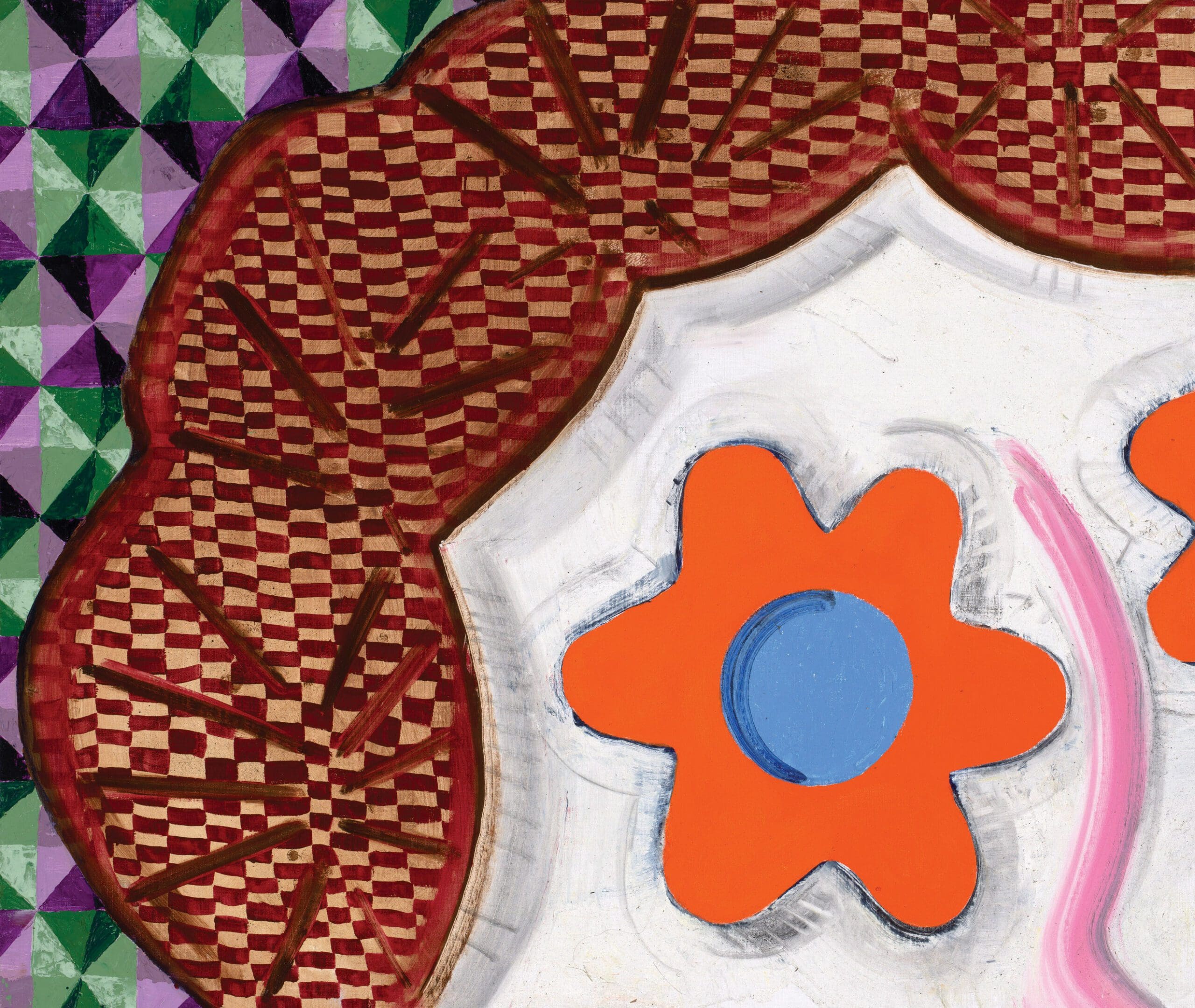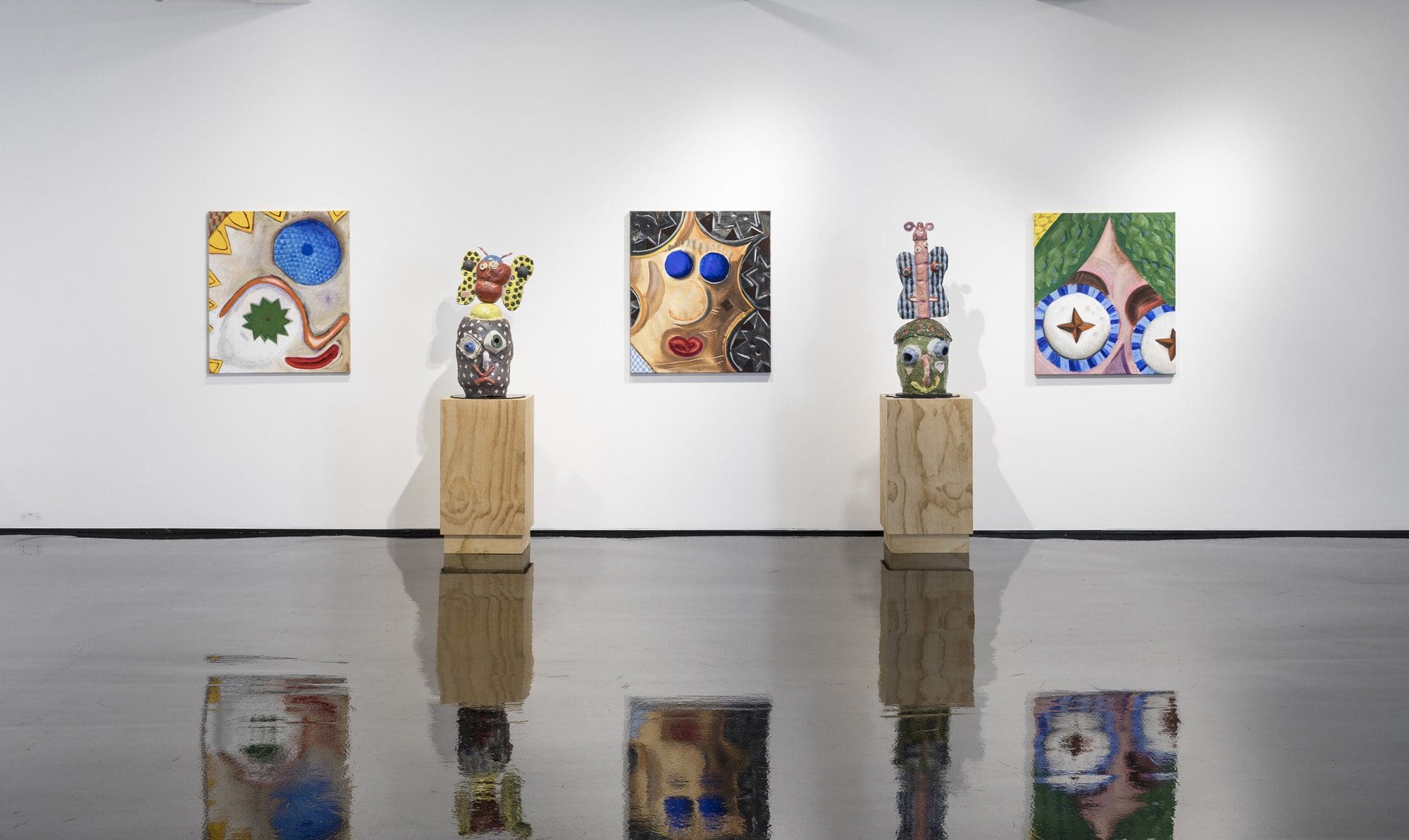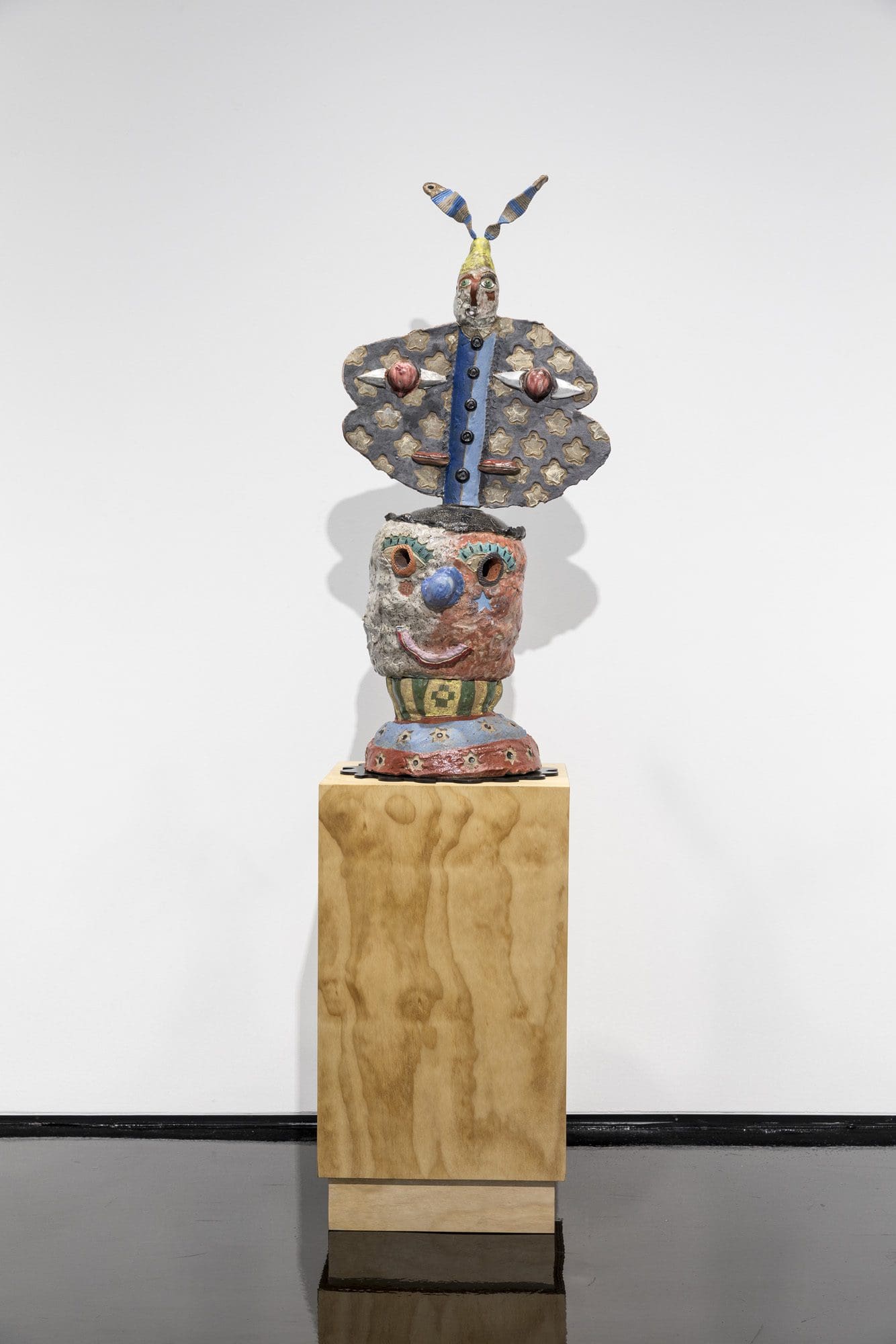
Finding New Spaces Together
‘Vádye Eshgh (The Valley of Love)’ is a collaboration between Second Generation Collective and Abdul-Rahman Abdullah weaving through themes of beauty, diversity and the rebuilding of identity.


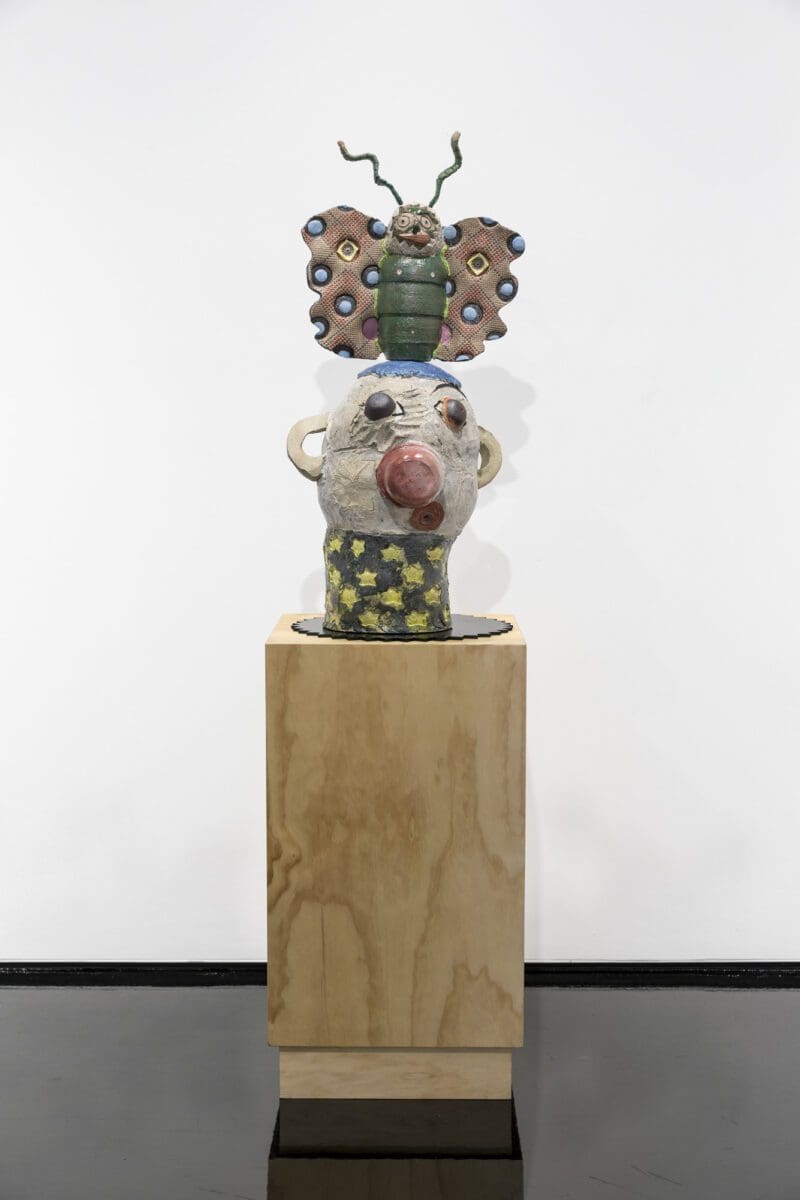
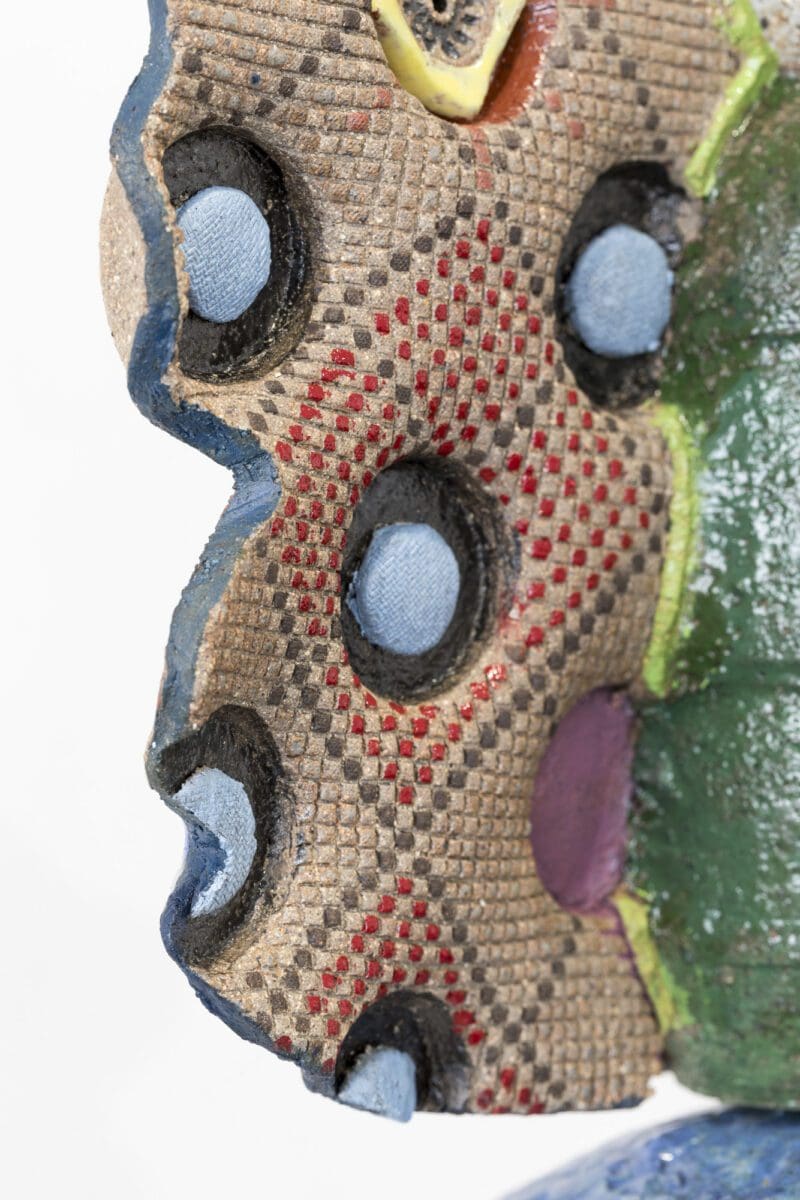

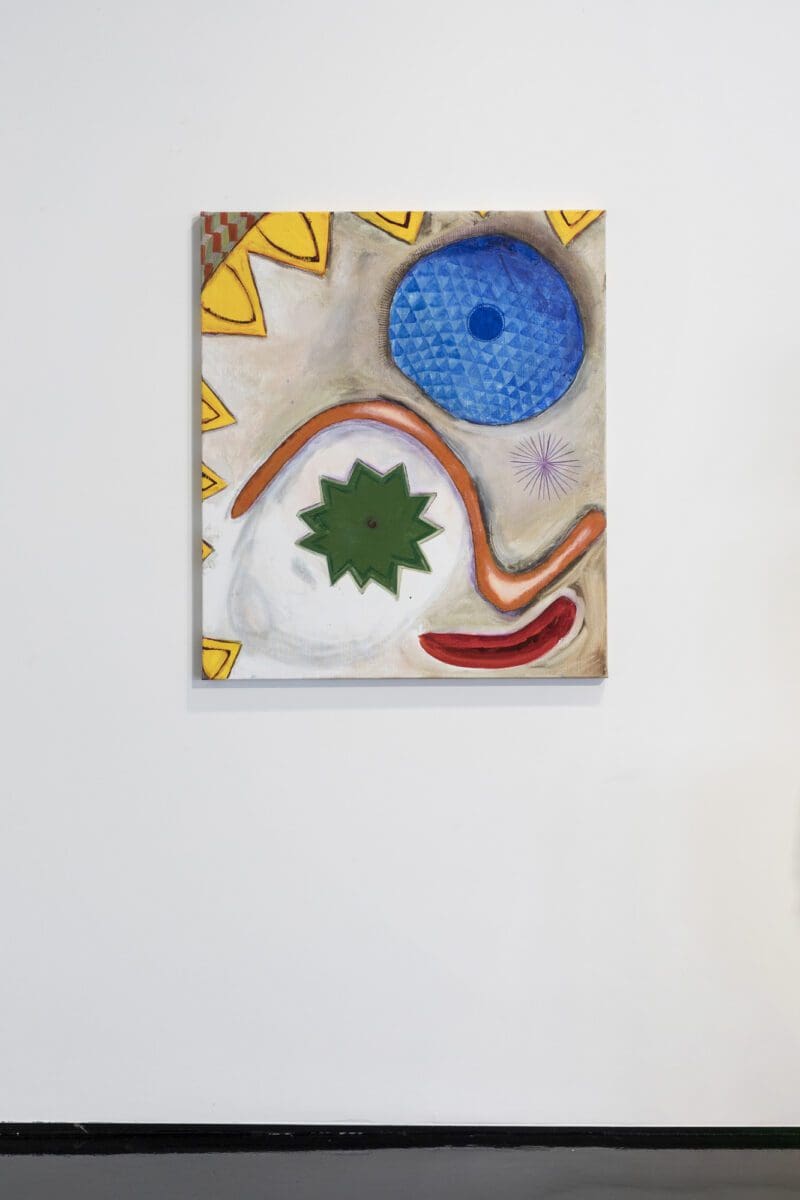
Whether painting, sculpting, or singing in garage-rock band Eddy Current Suppression Ring, Brendan Huntley’s practice has an energetic impulse. With art defined by vivid colours and patterns, he’s recently created various series centering motifs from eyes to butterflies, alongside a collaboration with Melbourne fashion house Alpha60. With an exhibition at Tolarno Galleries, Huntley reflects on his latest paintings and the nature of creating.
We’re in your studio in Eltham, looking at your latest paintings which feature your signature patterning and colour. They have a recurring eye motif, placed within what might be a face—but it’s more abstracted than that. These came out of your ‘pinhead’ sculptures, which are small ceramic faces—can you talk through that process?
The paintings aren’t necessarily obvious renditions of heads or butterflies, like other works in the show— instead, I wanted to lean into something more abstract that came out in the pinheads. The pinheads are a kind of subconscious meditative process, happening when I’m not in the mood to paint or go too big with sculpture.
They originally evolved out of leftover bits of clay at the end of a day of sculpting, which I manipulated into small faces using the palms of my hands, stamps, pen lids, seed buds, stones and drawing implements. They were also useful to fill up the kiln, which I guess comes out of an economic frugality and a desire to explore the material on a smaller, less labour-intensive scale.
They’re not studies—they’re their own thing. They capture a spontaneous, fluid energy, which was something I wanted to express and transfer to a larger two-dimensional scale. I became interested in the idea of using them as a jumping point for the paintings by zooming in on certain aspects to the point of abstraction, framing them around the eye to lead you into the work.
But then around the eye are various marks and patterns.
The eye and other facial features work as a counterweight to explore mark making and the joy and quality of the medium itself. The patterns reference material, clothing, skin, DNA. They also directly reference the patterns that I developed in the wings of my butterfly and moth sculptures. You’re noticing one form against a contrasted pattern—and that really does something, it takes you somewhere else. It gives a sense of space and depth, a place for the viewer to take a breath.
While your work has a realist quality, some painters, particularly abstract painters, speak of the bodily feeling of painting and marking with tools or brushes. Do you have that sense?
The bodily thing is definitely going on. It’s a satisfying feeling. For me, the subject matter is important in the sense that there’s something to relate to—but that’s really just the engine to start things off. I love the interplay between form and structure, and experimenting with materials. I sculpt, I paint, I draw, but ultimately, I just love making marks and capturing an energy.
Do you think about that while you’re painting? Or is that a later reflection?
Maybe on a subconscious level but definitely more so later. It’s like when I watch my kids painting: you can see they’re not necessarily thinking about capturing an exact replica of the subject. It’s more about getting some kind of energy out. Like I’ll say, “What’s that you’ve drawn?” And they’ll be like, “It’s a tractor.” It doesn’t look like a tractor, but it’s got that feeling of the tractor. It’s something about capturing feelings.
In almost every interview you do, people link your music and art practice. I was thinking how Eddy Current Suppression Ring, and much underground music, is a music of ‘making do’ with what you have. And I thought about how you make marks on your canvases and ceramics with sometimes rudimentary tools—it’s also a sense of ‘making do’. But when that happens for 20 years, does the naivety still stay there, or do you have to cultivate it?
I’ve been thinking about that lately because Eddy Current has been jamming more regularly again— although we kind of go in and out, we still have our sound. Some bands make a conscious effort to change their sound, but because we’ve always kept it so stripped back, the rest is about how strong you can make the music, the lyrics, and the delivery of those elements. That’s on the human. And, like you say, it’s how I make my artwork too; there’s a simple frugalness to it. Not necessarily with the quality of the tools and materials, but more about keeping it stripped back. Using those simple rudimentary tools and materials cuts the fat away. It’s not necessarily cultivating something raw, it just is raw. Keeping things stripped back also leaves plenty of room for accepting accidents—and the ability to see them with clarity. It’s knowing the difference between good accidents and bad accidents, and having the confidence to follow the good ones.
I think that’s often what makes a good artist— people who have the taste to recognise a good accident.
I completely agree. It’s a core foundation, isn’t it? I’m feeling that way with this new series of work because I’ve really enjoyed letting them build themselves from the pinheads—embracing, enhancing and framing those elements to the point where they become their own thing.
When you’re performing on stage, especially as the singer, you’ve got that intuitive role of winning the audience over. Do you ever feel that when you’re painting, wondering if you’ll win someone over?
In the building stages it has to come back to yourself. If you’re playing and doubting yourself… Doubt can be good but…
Not if everyone else feels that doubt?
Well, you might think during a performance, “Oh, I’m really failing here. And they can see it.” And then later someone is like, “Man, that was the best!” And you think, “Oh, okay, cool.” It changes how you thought of the event as well, especially when it’s someone’s opinion you admire and trust. But when I’m painting or sculpting, I want to firstly impress myself. I have to dig it. I think, “Would I want this out in the world?” There’s always going to be someone who loves it and somebody who hates it, so for me the first question is: do I stand by it? The rest is out of my control.
Have you reflected on why you like bold and bright colours so much?
In high school, I went through a stage where I used to only wear black and one day my friend’s mum was like, “Why are you always wearing black, Brendan?” Maybe it was that teenage emo thing; my brother was a goth so that was kind of influential. But one day after that I was like, “I’m gonna wear this red t-shirt that I’ve never worn.” And it felt good, you know. It changed my perspective and my mood.
I get a real joy out of picking colours and finding the ways they coordinate or clash. Sometimes it’s so wrong it’s right—it’s like a game. And I trust my intuition when it comes to colour patterns. I don’t know where that trust comes from—maybe from growing up with parents who were makers, potters, painters, so I was taught about colour theory early. And I was constantly drawing from a young age, and then doing graffiti back in the day. I’d go in and pick colours off the Bunnings shelf or something and ask myself, “How can I make these colours work so it really kicks?” And maybe sometimes you don’t get it right, but then you work on it till you do.
True to Life
Brendan Huntley
Tolarno Galleries (Melbourne VIC)
Until early September
This article was originally published in the September/October 2023 print edition of Art Guide Australia.
